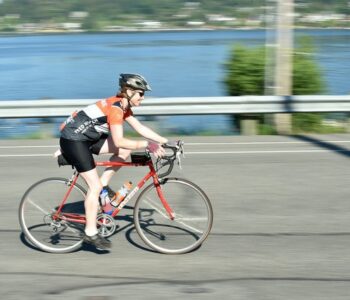 Sports Rehab
Sports Rehab
Summer, Summer, Summertime!
It has been a relatively cool and rainy spring so far in the Pacific Northwest, but sun breaks and longer daylight hours mean that summer is coming! And with it comes fun outdoor activities like gardening, paddling (canoe, kayak, or SUP), hiking, backpacking, and various field or court sports. Sometimes when warm weather has been a long time coming, excitement prompts us to jump into these outdoor activities with a little extra energy or gusto. Have you been preparing your body for your summer activities of choice?
It’s important to give your body time to adapt to any changes in activity and/or level of intensity. Pushing your body a little bit is great to build strength, endurance, etc, but pushing too hard too fast will put you at greater risk of acute or chronic injury. In general, start with small progressions if an activity is new to you, or very different from your baseline activities. Pay attention to how you feel during and after an activity to gauge your body’s tolerance or response. Activities shouldn’t be painful during or after. Some fatigue or muscle soreness is expected, but it should still feel comfortable to move around through normal daily activities. This type of discomfort should resolve in 1-2 days after the activity. You can add volume or intensity after the activity starts start to feel easier and the response to the activity is minimal. How much to add is partly dependent on how things feel, but a place to start is to ramp up no more than 10-15% in a week. Once you add on a little bit, see how your body feels during and after and adjust back down a little if needed.
When temperatures are warmer and days are longer, there are additional considerations to keep in mind:
- Stay hydrated: keep drinking water and electrolytes when working out in the sun and heat, particularly if you’re going up to higher elevations. Baseline daily hydration for normal function is drinking the number of ounces of fluid equal to half your body weight in pounds. Add more water for additional exercise, especially in dry climates/elevations or sustained time in the sun.
- Fueling: longer activities can deplete blood glucose levels and tap into stored glycogens – for longer duration activities, keep snacking. And eat well-balanced meals outside of activities.
- Sleep: sleep is when a lot of recovery and repair happens in our bodies. Later sunsets and earlier sunrises can sometimes make sleeping more difficult for one reason or another. Aim for at least 7-8 hours/night,
- Sun protection: protect your skin and eyes while out playing in the sun! It can drain your energy as well as put yourself at risk for sunburn, skin cancers, or eye damage.
If you want help preparing your body for summer activities, or have pain with any activities, schedule a consultation with a PT at Sage Physical Therapy. One of our Physical Therapists will assess your movement mechanics, functional strength, mobility, and other specifics to determine where you may be at risk of injury to reduce future risks, as well as help recover from any issues you may be having.
Written by Deb Scheibe PT, DPT, CKTP, FMS. Deb brings her love of sports and experience as an elite level Ultimate Frisbee player to her physical therapy practice, with the goal of bringing out the athlete in everyone no matter what their activity of choice. She was inducted into the USA Ultimate Hall of Fame in 2019.